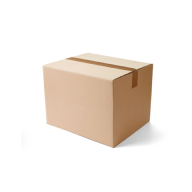HyFlex 11-618
5.0 / 5
Product description
Description
Enhanced dexterity: HyFlex® 11-618 multi-purpose gloves’ light 18-gauge liner grants them excellent dexterity, for ease of use and minimal strain
Optimized tactility: These HyFlex® gloves’ extra thin PU coating delivers optimal tactile sensitivity and a “second skin” feel, ideal for delicate handling
Improved durability: Beyond tactility, their PU coating ensures ANSI/EN-compliant abrasion resistance
Considered aesthetics: HyFlex® 11-618 safety gloves’ dark nylon liner masks dirt and stains, for long-lasting wear
Certified skin-friendliness: Dermatest® certification makes for dermatologically friendly personal protection
Recommended for
Picking, fastening components
Assembling and mounting components
Fastening components, parts
Product Details
Antistatic : Yes
Length : 195-245 Mm 7.63-9.96 Inches
Available Sizes : 6, 7, 8, 9, 10, 11
Coating Color : Black
Coating Material : Polyurethane
Construction : Knitted
Cuff Style : Knitwrist
Finishing : Palm Coated
Gauge : 18
Liner Color : Dark Blue
Liner Material : Nylon
Silicone Free : No
Washing Temperature : 40 °C (104 °F)
About Coated Cut Protection Glove
Coated Cut Protection Gloves provide essential hand safety with cut-resistant materials and specialized coatings for enhanced grip. Ideal for construction, manufacturing, and handling sharp materials, these gloves offer both protection and dexterity for demanding work environments.
- Cut Resistant
- Electrical Protection
- Machine Washable
- Hand Protection
Standards and labels
Ansell delivery terms
Free delivery for all Ansell products
377,52 €
Price per 12 packages (144 pairs)
2,62 € / pair
Free delivery
A carton contains 12 packages (144 pairs)



